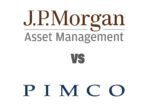He pointed out that North American companies account for half of the MSCI All Country World Index, and emerging markets account for about 11%.
However, emerging markets are driving global demand.
“Revenue from emerging markets is three times the size of its representation in its benchmark. This is a really a big deal. One way to interpret it is that investors can get EM exposure through multinationals such as General Electric or Nestle.
“The other way is to find EM companies that are growing and becoming multinationals.”
However, stock picking ability is required. In the past, headline macronews had a strong impact on all emerging markets. Today, company-specific factors account for two-thirds of emerging market returns compared to one-third twenty years ago, Wagener said.
Capital Group is currently overweight the index in China, for example.
“Our response is not that we’ve taken a stand on big issues such as the reform movement, anti-corruption or monetary policy. It’s about how individual businesses are growing rather than the broader picture. The kind of companies you own and what they’re trying to accomplish are what matters.”
Earnings and volatility
“The real problem with emerging markets has been earnings disappointment. Multiples have been drifting down. It’s been a stagnant earnings environment.”

Part of the reason has been a concentrated emerging markets index populated with state-owned enterprises that have poor profitability, he said. Another reason is materials and energy companies, particularly in Russia and Latin America, have had declining earnings.
The time is right for selective stock picking. Index underperformance of emerging markets has driven down valuations for some well-managed, quality companies, he said.
The largest risk has been volatility, as large declines can destroy long-term returns. Emerging markets didn’t do anything from 1994-2004, Wagener explained. Total return was zero percent and there were two declines over 50%.
“The volatility of EM was offsetting any kind of return prospect. Institutional investors don’t want to stomach volatility.”
Volatility is still an issue, but he believes multi-asset investing across the spectrum of instruments can address it. Moreover, the growth of the dividend culture should help offset volatility in the long term.
More than one-third of emerging market stocks have a dividend yield greater than 3%, the firm said.
Risks then and now
Investor concerns about emerging markets such as corporate governance have been offset by substantial progress over the last 20 years, Wagener.
“We’ve taken the path of trying to align ourselves with domestic investors. Foreign investors have the impression that local investors aren’t going to try to improve corporate governance. The reality is that when you engage with local investors, particularly pension funds and life insurance companies, they want to push for corporate governance themselves.”
Liquidity remains a risk because emerging markets tend to have a lot of foreign participation and that can result in capital ebb and flow based on local valuations, he said.
“But there will be more liquidity ten years from now than there is today,” he said.
“The basic premise of EM — as the world becomes more integrated people in EM aspire to a higher standard of living — hasn’t changed. They are moving in that basic direction.”
















